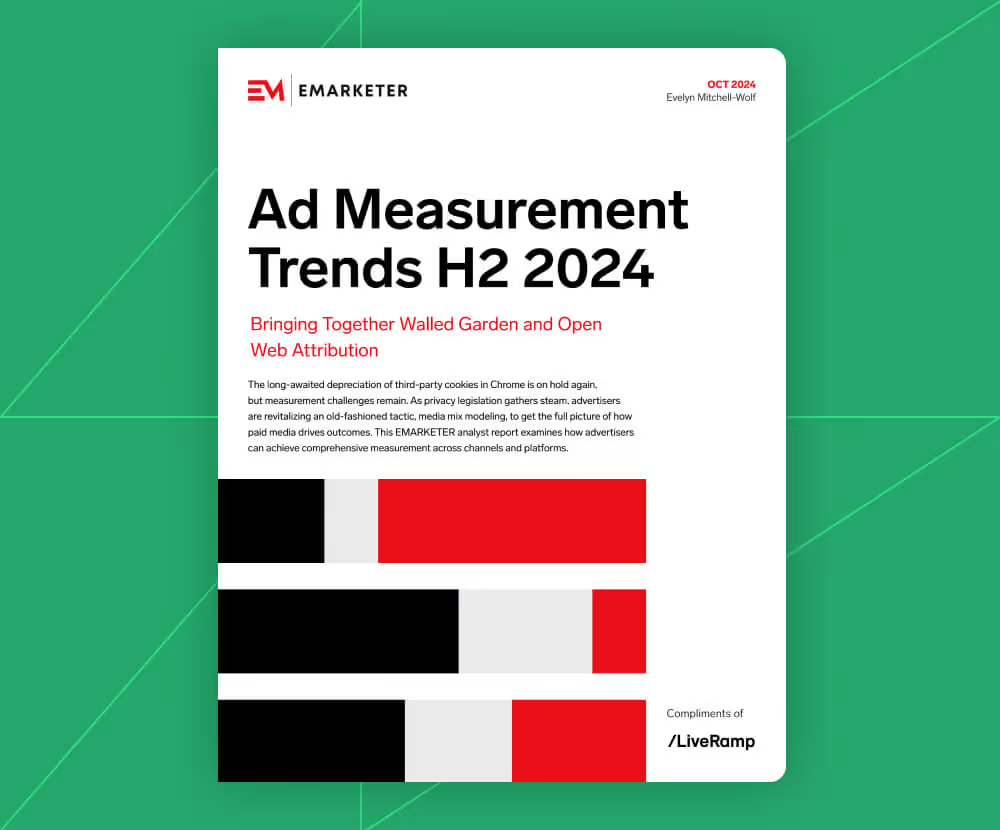Unlocking CTV's Full Potential with Data Collaboration
How CTV advertising can fuel business growth
There’s no denying the popularity of CTV. Today more than two-thirds of the US stream their favorite shows. And for advertisers, the opportunity to reach new audiences with targeted content is unprecedented.
LiveRamp’s Adam Paul, Principal Account Executive, explains what has led to the rise of CTV, the challenges that advertisers and publishers must overcome to win in this space, and how data collaboration – securely combining data for new insights – can help.
“At the end of the day, it comes down to the consumer,” Adam said. “Data collaboration allows advertisers and publishers to collaborate in a way that they can deliver the right ads in the right context.”
Check out “Here’s the deal…” to understand how advertisers can unlock the full potential of CTV for better consumer insights that drive business growth.
Transcript
CTV is exploding right now. There are a few reasons why. I’m Adam Paul, executive director media alliances at LiveRamp, and here’s the deal.
There are a couple of things that are happening all at once. First of all, just the technology is finally where it needs to be. High speed internet is in all of our homes. The experience feels a lot like regular TV. It’s the same speed. It’s not glitchy. It feels good to watch it. The second is COVID, accelerated the adoption.
There was no new content being produced. We had to find new or old things to consume that felt new.So we went to streaming platforms that were airing old episodes of programming that we used to love or or shows we’ve never seen or movies that we’ve never seen and wanted to catch up on. And then the last is everybody became budget conscious a few years ago, and streaming felt at least at that time to be a more cost affordable option.
Interestingly, I would say advertisers and publishers have similar challenges and opportunities when it comes to streaming. There’s a lot of fragmentation, and both advertisers and publishers have to figure out how to get a consolidated view of consumers, what they’re watching across different screens, and understanding of who’s consuming, which households are consuming, and make the most efficient use of their dollars. Historically, both advertisers and publishers were relying on panels and proxy measurements to get an understanding of of their campaigns. Publishers have to think about maximizing their clients’ investment across the entirety of their portfolio.
When it comes to that fragmentation across linear, streaming, various streaming apps, they’re trying to understand how they can help their advertisers maximize reach, achieve the optimal frequency, and drive business outcomes. On the advertiser perspective, it’s very similar except it’s not within one, network or one publisher. It’s across the entirety of their spend. What data collaboration enables is more deterministic measurement that enables me to get a view of my investments across all of the platforms and all of the publishers and all of the media types where I’m investing.
At the end of the day, it ultimately comes down to the consumer. They want an ad experience and ads to be delivered that are relevant to them. And data collaboration and all of the insights that come from data collaboration allow advertisers and publishers to collaborate in a way that they can deliver the right ads to consumers in the right content, in the right context that will be meaningful and ultimately drive to business outcomes for advertisers.
There’s no denying the popularity of CTV. Today more than two-thirds of the US stream their favorite shows. And for advertisers, the opportunity to reach new audiences with targeted content is unprecedented.
LiveRamp’s Adam Paul, Principal Account Executive, explains what has led to the rise of CTV, the challenges that advertisers and publishers must overcome to win in this space, and how data collaboration – securely combining data for new insights – can help.
“At the end of the day, it comes down to the consumer,” Adam said. “Data collaboration allows advertisers and publishers to collaborate in a way that they can deliver the right ads in the right context.”
Check out “Here’s the deal…” to understand how advertisers can unlock the full potential of CTV for better consumer insights that drive business growth.

